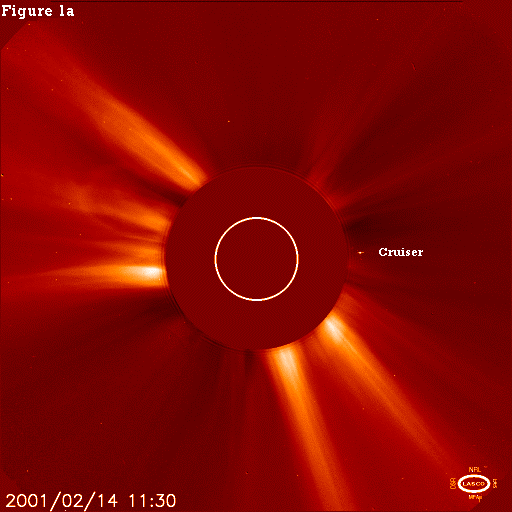
SOHO CAN SEE AROUND CORNERS
OR
WHY WE SEE THE SUN CRUISER
In my studies of the phenomenon known as the SUN CRUISER, I have noted that the cruiser seems to appear on the Lasco C2 images at the 3 o’clock and 9 o’clock positions of the solar disk, close abeam, more often than in other locations.
(see figure 1a)

From the archives here are other examples:
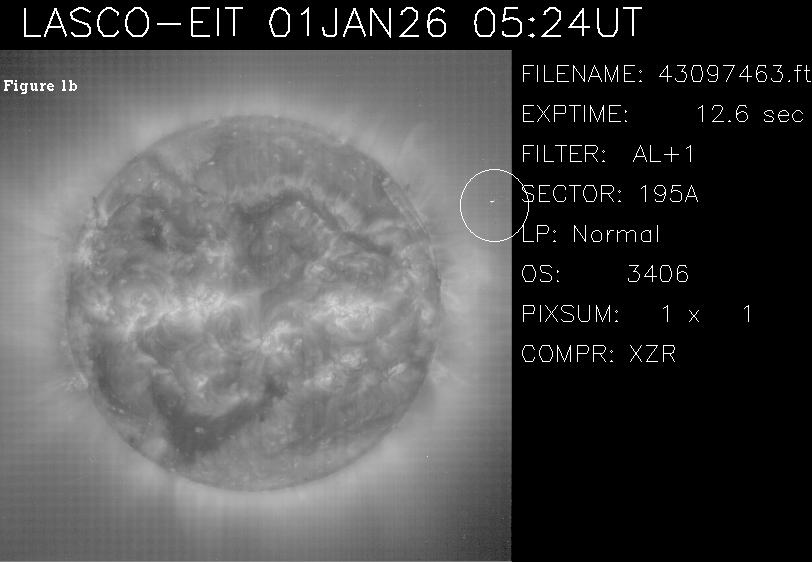
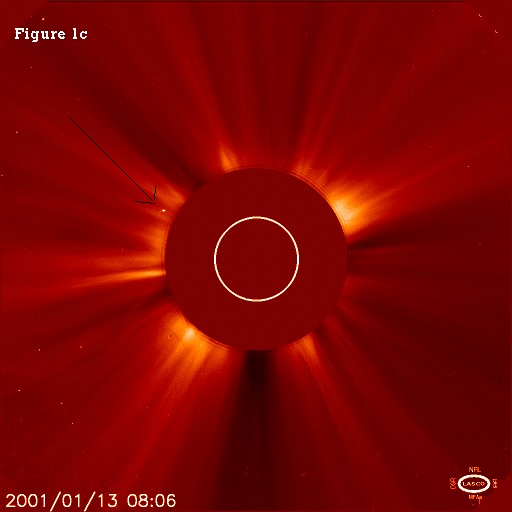
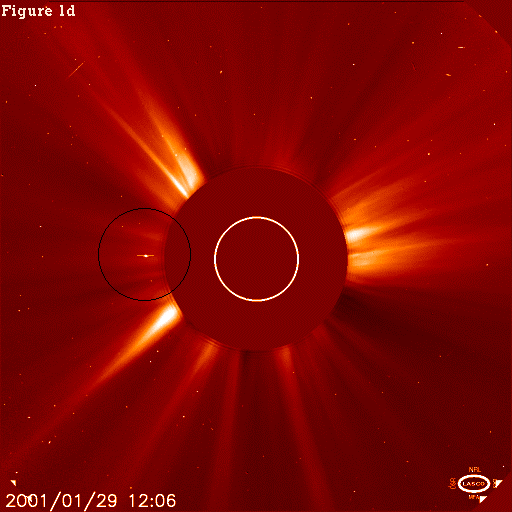
Figure 1d (above) also points out a significant factor: that of the WING effect on many of the SUN CRUISER images. This wing effect is caused by the over saturation of the CCD images by the intense sunlight being reflected by the object. Because these are time exposures, the CCD cells over saturate and cause the winged effect in adjacent cells and thus the relative pixels in the digital image.
In order for the object to be able to reflect this light it must be beyond the sun, as seen from SOHO.
Why are we seeing this anomaly on SOHO and not other earth-based telescopes?
Certainly, a number of anomalous images can be attributed to particle strikes on the Lasco Imagers. Streaks and splatters are common on Lasco images and are caused by high-energy particles passing in front or o striking the imagers.
But the cruiser is something different. There is in fact more than one Cruiser. There are at least three distinct artificial objects operating in the area of the sun. Particle strikes are random events with random effects. Over the last 2 ½ years I have noted three shapes that appear more and more frequently. Their shapes do not vary, only their relative size on the image indicating distance from the imager. For tonight’s purposes I will stick to the WINGED CRUISER.
I believe SOHO can see these objects for two reasons:
It is taking more images than Earth Based telescope;
And
SOHO is where Earth is NOT.
SOHO does not orbit the earth. It orbits the sun, 1.5 million kilometers closer to the sun than the earth. SOHO also orbits a Lagrange Point – L1.
Here’s NASA’s explanation:
The Italian-French mathematician Josef Lagrange discovered five special points in the vicinity of two orbiting masses where a third, smaller mass can orbit at a fixed distance from the larger masses. More precisely, the Lagrange Points mark positions where the gravitational pull of the two large masses precisely equals the centripetal force required to rotate with them. Those with a mathematical flair can follow this link to a derivation of Lagrange's result.
Of the five Lagrange points, three are unstable and two are stable. The unstable Lagrange points - labeled L1, L2 and L3 - lie along the line connecting the two large
masses. The stable Lagrange points - labeled L4 and L5 - form the apex of two equilateral triangles that have the large masses at their vertices.
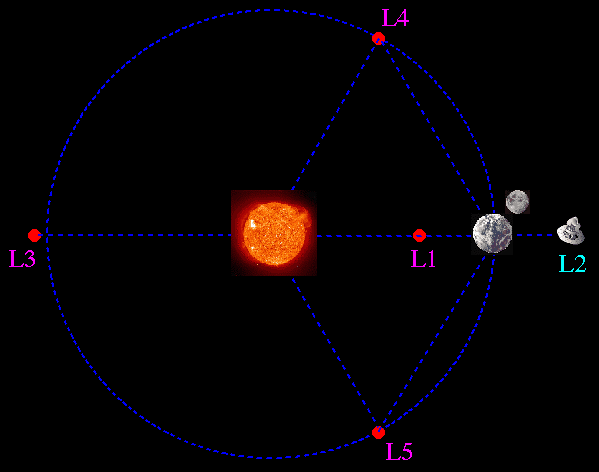
The L1 point of the Earth-Sun system affords an uninterrupted view of the sun and is currently home to the Solar and Heliospheric Observatory Satellite SOHO. The L2 point of the Earth-Sun system will soon be home to the MAP Satellite and (perhaps) the Next Generation Space Telescope. The L1 and L2 points are unstable on a time scale of approximately 23 days, which requires satellites parked at these positions to undergo regular course and attitude corrections.
NASA is unlikely to find any use for the L3 point since it remains hidden behind the Sun at all times. The idea of a hidden "Planet-X" at the L3 point has been a popular topic in science fiction writing. The instability of Planet X's orbit (on a timescale of 150 days) didn't stop Hollywood from turning out classics like The Man from Planet X
Note that SOHO is orbiting the L1 point on the above graphic.
The orbit is an elliptical Halo Orbit. This means that sometimes SOHO is ahead of the earth, relative to our own orbital path, and sometimes behind.
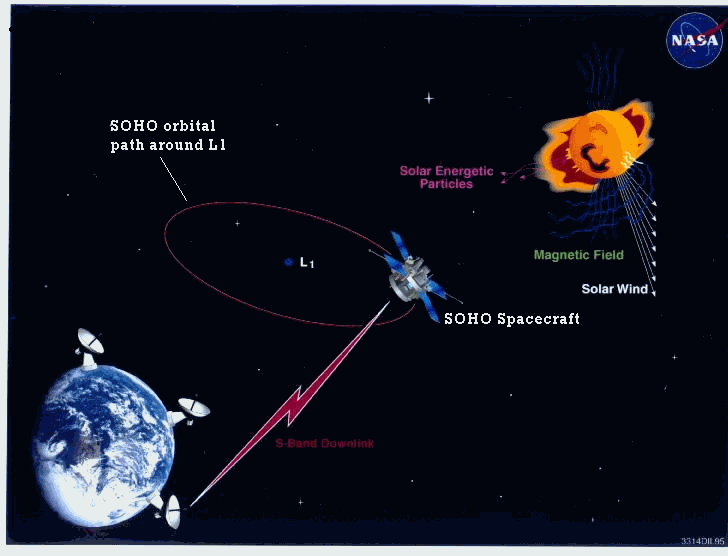
The next crude graphic shows what SOHO sees and earth does not when SOHO is at the two extremes of this Elliptical Orbit:
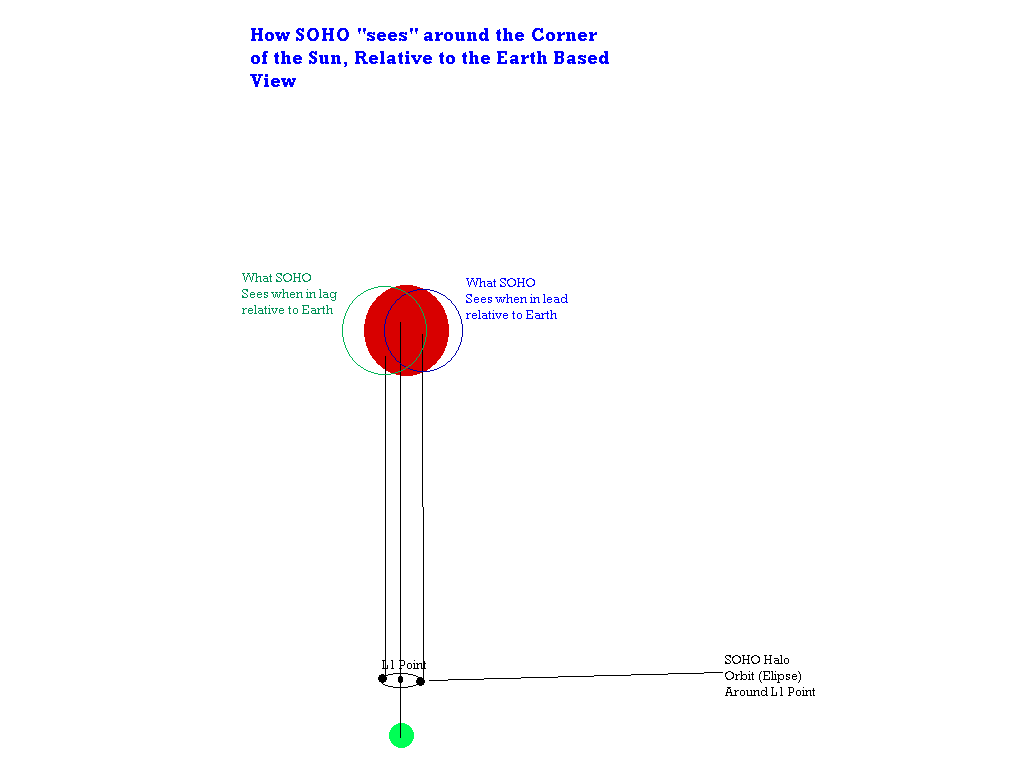
When SOHO is at its extreme point AHEAD of the Earth, it sees around the solar disk, around the corner a few degrees. It does the same when at its extreme, lagging behind the earth.
At these two points in its orbit, it sees a few degrees around the solar disk that we can’t see from our position here on earth.
The following image illustrates:
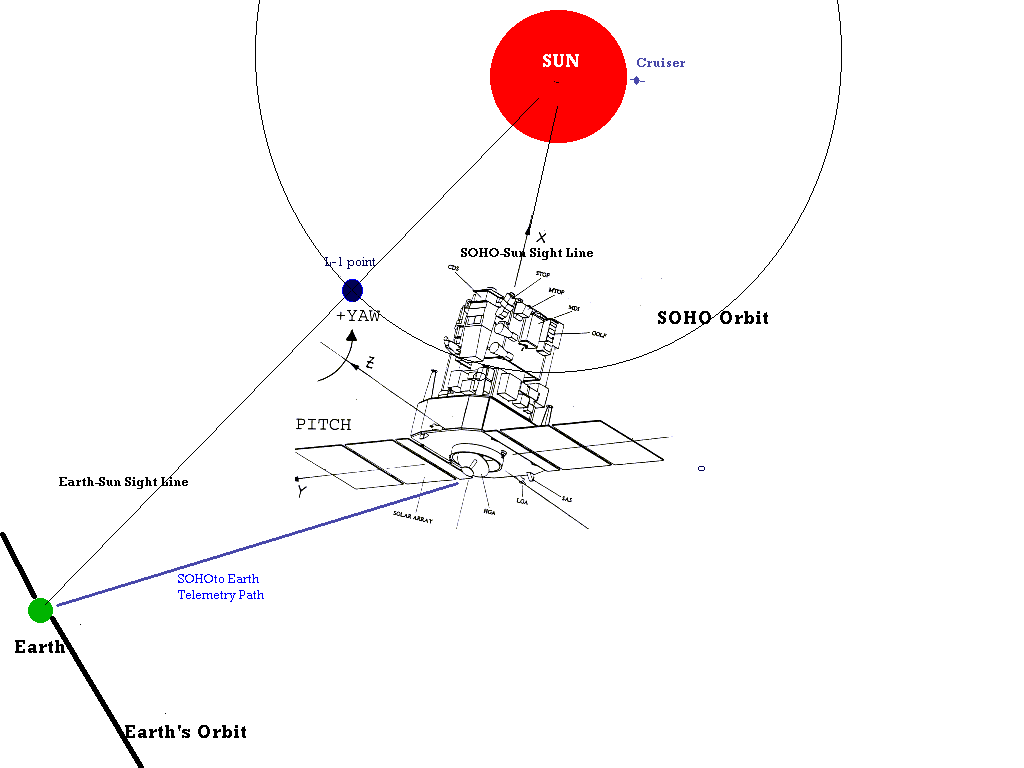
In this image, SOHO can SEE the CRUISER while here on earth, the solar disk blocks the CRUISER.
Now lets explore that NASA graphic and words about Lagrange Points again:
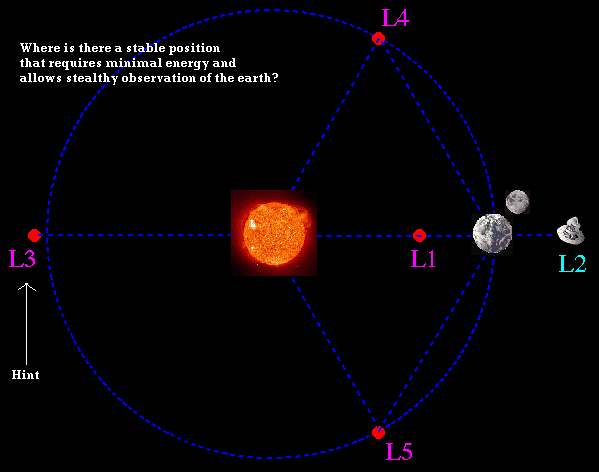
And what did NASA say:
NASA is unlikely to find any use for the L3 point since it remains hidden behind the Sun at all times. The idea of a hidden "Planet-X" at the L3 point has been a popular
topic in science fiction writing.
So hidden behind the sun is a stable point where an outpost could be established. This would allow for a relatively large object (up to .24 mass of earth) to expend minimal energy and remain optically invisible from earth, since L3 is always on the other side of the sun from earth at just over 1AU.
Discussion of size:
It is a relative certainty that an object, if it exists at L3, would be less than .24 mass of earth, because even at ¼ the mass of earth it would have a noticeable effect on the orbits of Mercury, Venus, and Mars. Such perturbations have not been indicated ( of course if an object has been there since before recorded observations, any perturbations would not have been recognized as such and look to be part of the normal Newtonian orbits of these three Planets).
It seems reasonable, that if an object is stationed at L3, it is not itself the CRUISER.
While the CRUISER seems to have a preference to be seen at the 9 o’clock and 3 o’clock positions relative to solar disk, it appears in other places on C2, C3 and EIT images.
The Cruiser appears to have consistent shape, but the size may vary, indicating relative distance from SOHO changes.
Hypotheses :
More at later time.